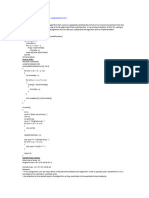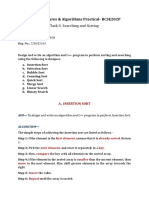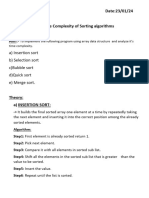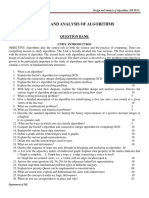0% found this document useful (0 votes)
29 views56 pagesDAA Lab File
The document outlines various algorithms including Linear Search, Binary Search, Merge Sort, Quick Sort, Selection Sort, Bubble Sort, Insertion Sort, and Strassen's Matrix Multiplication. Each algorithm is implemented in C++ with accompanying time complexity analysis for best, worst, and average cases. The document serves as a comprehensive guide for understanding and analyzing these fundamental algorithms.
Uploaded by
shivkumarbhardwaj043Copyright
© © All Rights Reserved
We take content rights seriously. If you suspect this is your content, claim it here.
Available Formats
Download as PDF, TXT or read online on Scribd
0% found this document useful (0 votes)
29 views56 pagesDAA Lab File
The document outlines various algorithms including Linear Search, Binary Search, Merge Sort, Quick Sort, Selection Sort, Bubble Sort, Insertion Sort, and Strassen's Matrix Multiplication. Each algorithm is implemented in C++ with accompanying time complexity analysis for best, worst, and average cases. The document serves as a comprehensive guide for understanding and analyzing these fundamental algorithms.
Uploaded by
shivkumarbhardwaj043Copyright
© © All Rights Reserved
We take content rights seriously. If you suspect this is your content, claim it here.
Available Formats
Download as PDF, TXT or read online on Scribd
/ 56





























































































